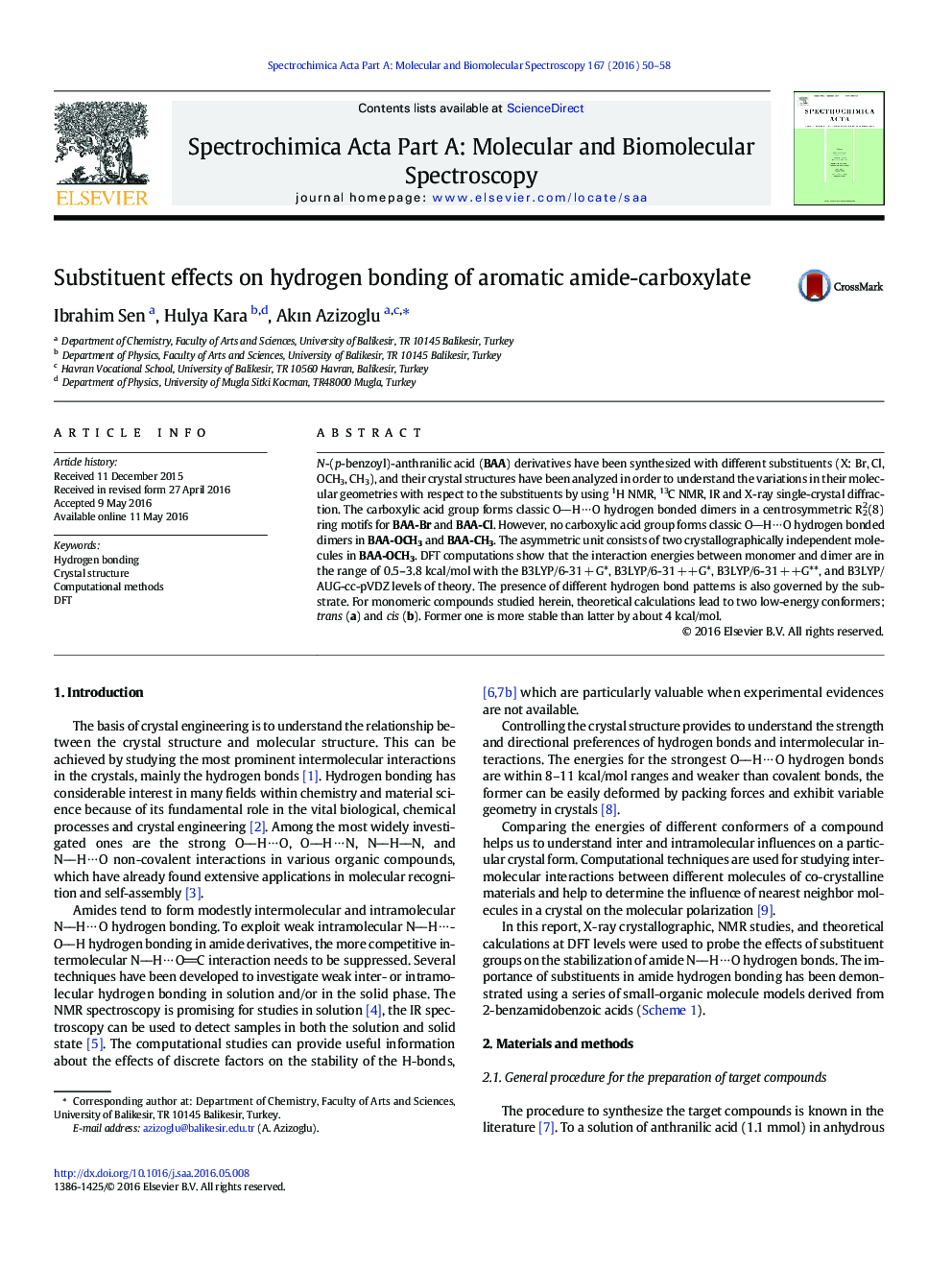| Article ID | Journal | Published Year | Pages | File Type |
|---|---|---|---|---|
| 1228639 | Spectrochimica Acta Part A: Molecular and Biomolecular Spectroscopy | 2016 | 9 Pages |
•N-(p-Benzoyl)-anthranilic acid derivatives have been analyzed and characterized.•NH ⋯ OC hydrogen bonds are more stable than NH ⋯ OH hydrogen bonds.•The interaction energy values of monomers are more stable than dimers.•The research shows intra and inter-molecular interactions in the title compound.
N-(p-benzoyl)-anthranilic acid (BAA) derivatives have been synthesized with different substituents (X: Br, Cl, OCH3, CH3), and their crystal structures have been analyzed in order to understand the variations in their molecular geometries with respect to the substituents by using 1H NMR, 13C NMR, IR and X-ray single-crystal diffraction. The carboxylic acid group forms classic OH ⋯ O hydrogen bonded dimers in a centrosymmetric R22(8) ring motifs for BAA-Br and BAA-Cl. However, no carboxylic acid group forms classic OH ⋯ O hydrogen bonded dimers in BAA-OCH3 and BAA-CH3. The asymmetric unit consists of two crystallographically independent molecules in BAA-OCH3. DFT computations show that the interaction energies between monomer and dimer are in the range of 0.5–3.8 kcal/mol with the B3LYP/6-31 + G*, B3LYP/6-31 ++G*, B3LYP/6-31 ++G**, and B3LYP/AUG-cc-pVDZ levels of theory. The presence of different hydrogen bond patterns is also governed by the substrate. For monomeric compounds studied herein, theoretical calculations lead to two low-energy conformers; trans (a) and cis (b). Former one is more stable than latter by about 4 kcal/mol.
Graphical abstractFigure optionsDownload full-size imageDownload as PowerPoint slide
